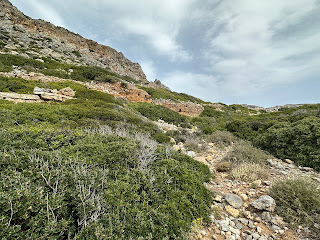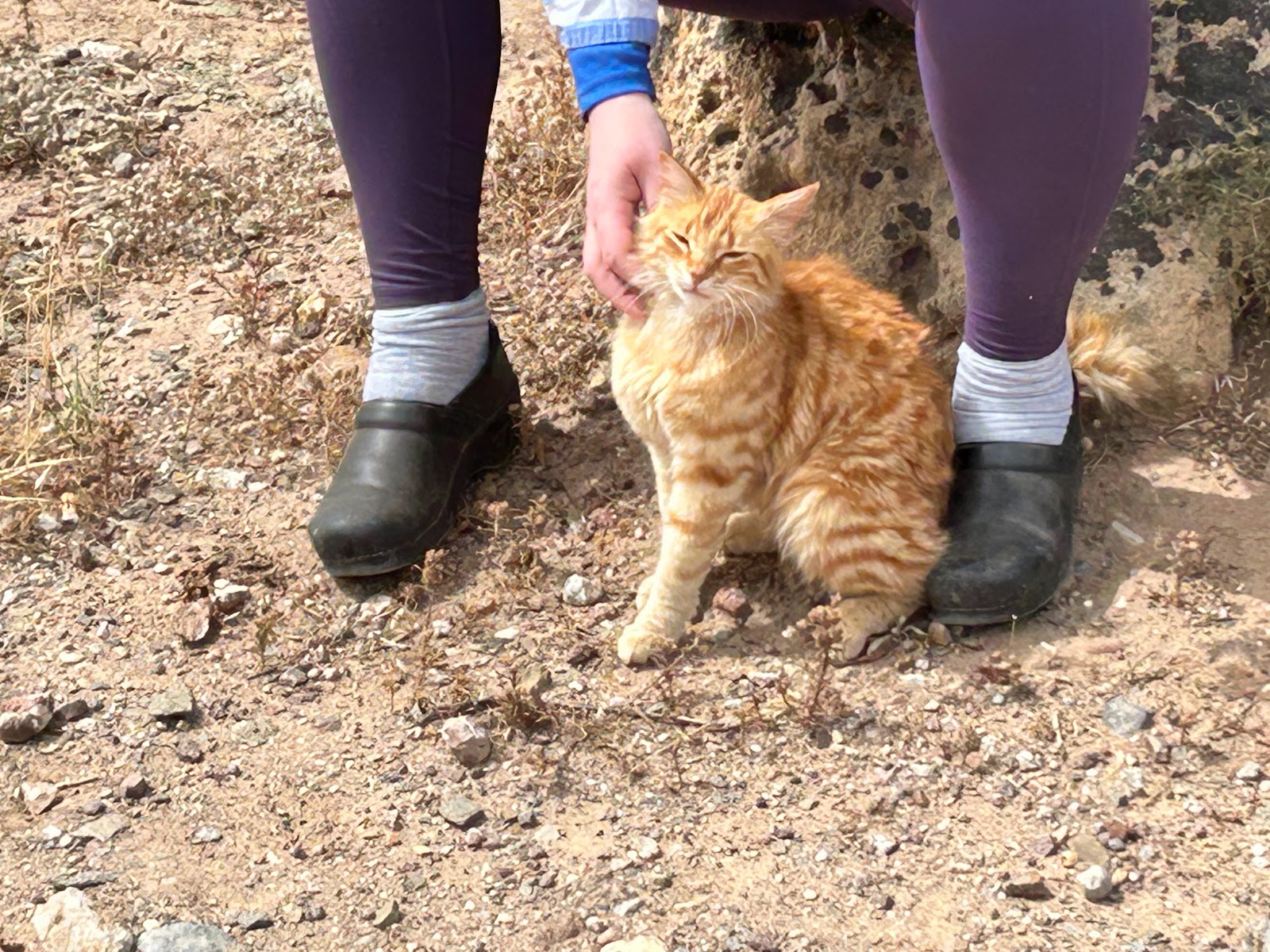On the 14th we did our major excursion to the West of Crete - starting off going from Heraklion to Falasarna (see map). Fortunately, there are some really nice roads in Crete and in particular a highway that runs along most of the Northern coast (not so much the Southern coast, something we're putting down to a combination of lack of good road-building spots, less tourism/beaches there, and possibly because the North is closer to Europe so gets most of the traffic).
 |
| Map showing Heraklion to Falasarna - about a 3 hour drive. |
Falasarna is today known for being a great beach town, and we can attest that there were in fact beaches in the area.
 |
| Close up shot of Falasarna beach |
We didn't go to any, as neither of us is beach-compatible -- who burns up first would be a bit of an exciting race, but that's about it. Instead, we went to the ancient port city, which has been well preserved. Partially because it's all fenced off and despite allegedly being open from 8am-3:30pm, well, all we could see was an unstaffed booth. This is one of the big problems with seeing the high-quality but less-well-known sites in Greece. They're good enough to make it worth fencing them off - but not worth staffing so people can get in.
 |
| Falasarna ticket booth - closed |
There were even signs; the nearest one that showed an overview of the site could be gotten with an iPhone Pro telephoto:
 |
| Port area |
:
 |
| City wall fortification |
The app explained that the port was build around 330 BC with money from the Persians, in an attempt to keep Alexander the Great from expanding into the Mediterranean Sea. This, obviously, didn't work. But they did build a very nice looking port, as the app also showed in this birds-eye view:
 |
| Overview of Falasarna Port |





No comments:
Post a Comment